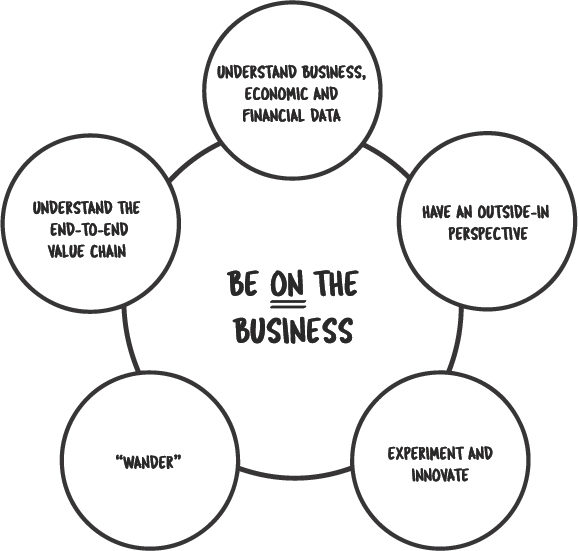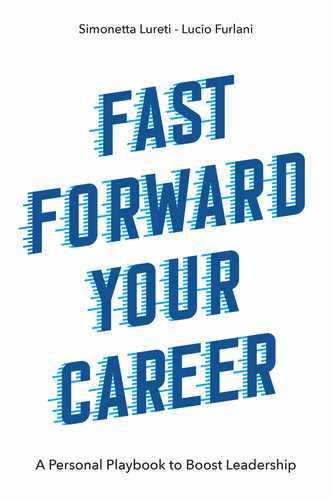Monday, 10:00 a.m.
“Good morning Andrew, how are you? We have a meeting to review the channel project. Do you want me to find a meeting room or should we meet here at your desk?” Katherine’s first review with Andrew is about to start.
“Here is fine, please take a seat. Elisabeth gave me an update and I would like to better understand in which direction you are moving.”
Katherine was expecting it: Elisabeth and Andrew continue their direct communication...
She is prepared, however, and ready to handle questions of all kinds. She immediately unlocks her notebook and opens her presentation. She starts with a few points summary of the overall situation, then she continues adding more details in the following slides. She often looks at Andrew to see if he has any feedback to make sure her presentation is clear or if he has any questions.
Andrew does not interrupt her; every now and then he nods, impassive, signaling with his eyes to go on. Katherine doesn’t know how to interpret Andrew’s unspoken communication. So, she tries to focus on the content. She illustrates all the relevant points and after about 20 minutes she closes with “Andrew, this is how we have set the project up and what we have developed so far. I have more detailed information and data if you would like to go deeper.”
Andrew nods, thoughtfully, and for a few long seconds, he says nothing. However, it is not the typical nodding of those who agree. Katherine begins to fidget but she tries to control her emotions.
“A lot of work, Katherine, but honestly you are off track.”
Katherine swallows, looking down. Andrew is definitely not tactful: She has to separate his style from the business considerations, avoid being overwhelmed by emotions, and rather try to remain calm and remember what Mary told her yesterday.
“Please tell me more, Andrew. We are still in the initial phases: We can change our direction if it makes more sense.”
“The problem is that you are only investigating some aspects and it is quite theoretical. You are not considering its feasibility, or actually how to generate a business impact out of your initiatives. This is not a university dissertation: It is a business project that must be implemented to deliver results. It has to be executable and affordable to be real.”
It is not easy to listen to such a harsh and perhaps too hasty judgment, but Katherine makes an effort to listen, resisting the temptation to defend her work. On the contrary, she takes notes on her notepad to convey the impression of being open to change.
“Various things are missing, but most of all you are not considering how our business processes actually work. First of all, our budgeting cycle. Your plan might be fine in theory, but there is no point in thinking about submitting a fund request 2 weeks after budgets are allocated. Similarly, the program review must take place before and not after the fiscal year earning announcement; otherwise, it is completely useless to answer any questions from the investors.”
“I get it. Let me take it with the team. I don’t think there are any problems in adjusting our deadlines.”
“Look, that’s just one of the problems. I’ll tell you another one: inventory management and the production cycle. They are never mentioned in your project. It looks like you’re sprinting, but this is a relay. You have to take the baton and you have to pass it. What are the implications for Manufacturing? And for Procurement?”
“We don’t know: It’s too early to say.”
“Sure, we don’t know, but we know they will be important. Production and Procurement will need time to prepare. What worries me is not that you don’t know yet, but the fact that you aren’t asking the question. In the project you presented to me, I saw a lot of details, but all in one direction only… give me an update next week, now sorry but I have to ask you to go because I am expecting an important phone call.”
And so saying, Andrew turns to his PC screen. He has already moved on to the next topic.
Katherine thanks, greets, receives no reply, and starts to go back to her desk. It was tough: not a single positive remark about the work done. Is it possible that Andrew has not seen that listening to the resellers has already revealed that our current strategy is based on at least 3 major, wrong, or obsolete assumptions? She was clear; her presentation was well articulated. Really didn’t Andrew see the value of the work already done?
At this point, tea is a must, indeed perhaps a chamomile tea would be better...
Back from this short break, Katherine reads her notes again and she must admit that her boss is brusque, but certainly not stupid and... he’s not wrong. Indeed, frankly he is definitely right.
She let herself be fascinated by the first results of their work and lost sight of the so-called “big picture,” the overall context. She chose to take a Design Thinking approach, but she lost sight of the feasibility of the project. She leads a multidisciplinary team, but, in fact, she has only a limited business perspective.
It was she who was wrong. Without realizing it, she put on the blinders. She did a great job in the project (Andrew didn’t say it this way, but that’s it, damn it!), but the details made her blind: She focused on the trees, missing the forest. She overlooked the impact, the consequences, and the dependencies with the rest of the organization: the other functions, processes, and teams.
She focused on optimizing a piece, hers, but not necessarily the whole. Now Katherine sees exactly what Andrew meant.
She smiles, thinking about the concept of antifragility: Will she be able to benefit from the conversation with Andrew, seize the opportunity, and propose a more valuable approach?
Maybe, but now her project seems a disaster to her: It’s as if Andrew had called her stupid. Now she really has no idea where to start over, how to approach Production and Procurement. Not to mention the budgeting process. Maybe Elisabeth could help her, but she is so hostile. Another internal help could be James, who, coming from Finance, should know the company budgeting process well. Yeah, James… shouldn’t he have given you an update 2 days ago? Instead, he was neither seen nor heard...
Business acumen is the ability to effectively and efficiently predict, interpret, and manage a business situation weighing both risks and opportunities. It is having a clear, strategic big picture, knowing how the company works and anticipating the implications of each decision. Having business acumen means being on the business, namely to focus on the success of the business as a whole and not on the needs of a single function or business unit (which would imply being in the business). It means interpreting analytics, listening to the market, prioritizing the benefit of the company to the interest of one part. It means confronting with colleagues to collect inputs and ideas, understanding the value generated by the company along the entire production chain, partners and suppliers included (see Figure 6.1 and Table 6.1 for details).

Figure 6.1 Be on the business
Credits: Sebastiano Boni
Having business acumen implies being a sort of chief executive officer (CEO), who prioritizes the need of the entire company to that of a single business unit, guaranteeing the best returns in the short, medium, and long terms.
In the last years, the concept of business acumen has evolved and has been reinterpreted according to contemporary needs. It has moved on from being strongly focused on the existing business model to leveraging business information, knowledge, and experience to empower new approaches aimed at designing future solutions. Therefore, business acumen has become a valid ally, not a brake, on innovation and Design Thinking.
Table 6.1 Key questions about being on the business
